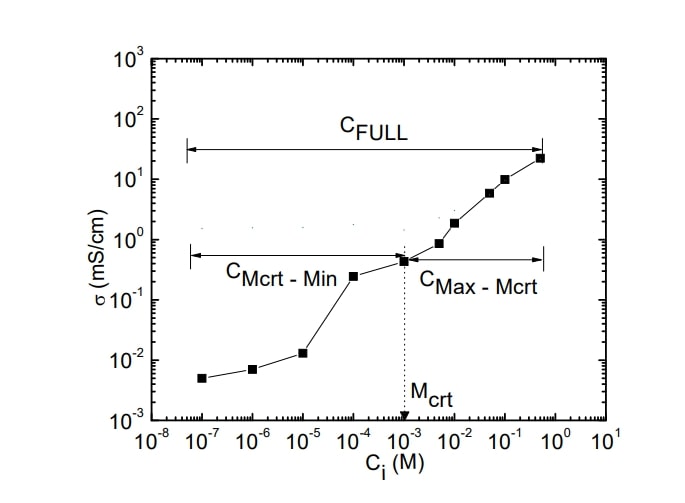This study presents a method to measure how contaminants interact with geomaterials like soil (silty clay and clay). It uses the distribution coefficient (kd) to quantify how much contaminant is absorbed into geomaterials. The method involves conventional lab tests and electrical conductivity measurements to understand this interaction. A key part of the method is identifying the critical concentration (Mcrt), which helps to decide whether the material absorbs or releases the contaminant. This approach improves the accuracy of environmental pollution control.
Accurate assessment of how geomaterials interact with contaminants is essential for effective waste containment and environmental protection. However, existing methods to quantify this interaction often lack consistency and fail to account for key factors influencing contaminant behavior onto geomaterials, leading to unreliable results in real-world applications.
- Use of Electrical Conductivity: This method measures changes in electrical conductivity to track ion concentration during geomaterial-contaminant interaction, quickly revealing whether contaminants are absorbed (conductivity decreases) or released (conductivity increases).
- Identification of Critical Concentration (Mcrt): It defines a precise contaminant concentration threshold that separates sorption from desorption behavior, ensuring accurate interpretation of results.
- Reduced Experimental Effort: By focusing on conductivity and Mcrt, the method reduces the number of batch tests needed, saving time and resources while maintaining accuracy.
- Comprehensive Parameter Integration: This method accounts for key factors such as contaminant concentration, specific surface area, cation exchange capacity, pH, mineralogy, and zeta potential to reliably calculate the distribution coefficient (kd).
Batch test setups include controlled liquid-to-solid ratio systems using geomaterials (BT, WC, AS, RS) and contaminants (SrCl₂, CaCl₂, CdCl₂, Pb(NO₃)₂). Equipment includes hot plates, centrifuges, AAS, water quality analyzers, and conductivity meters.
This technology has been experimentally validated through extensive batch testing on four different types of geomaterials and four contaminant types. Guidelines for optimized concentration ranges and testing procedures have been established.
3
The invention has significant implications for environmental protection and public health. Accurate determination of kd and understanding the sorption-desorption dynamics enable engineers to design toxic waste disposal repositories with geomaterials that exhibit high sorption capacities and retardation factors, effectively mitigating contaminant migration into groundwater and soil systems. This reduces environmental pollution risks, preventing exposure to hazardous substances such as heavy metals and radionuclides. Consequently, the invention contributes to safeguarding natural resources, preserving ecosystem integrity, and protecting communities from health hazards related to geoenvironmental contamination.
- Environmental Protection: This method is applicable in evaluating and mitigating soil and groundwater contamination caused by industrial discharge, landfill leakage, and agricultural chemicals. It helps environmental agencies design effective containment and remediation strategies based on accurate contaminant behavior.
- Hazardous Waste Management: This technology assists in the development and monitoring of hazardous waste disposal facilities. It ensures long-term stability by accurately predicting contaminant retention in barrier materials and prevents the leaching of harmful substances into surrounding ecosystems.
- Geotechnical and Civil Engineering: In geotechnical applications, this method is useful for selecting appropriate geomaterials in infrastructure projects such as landfills, embankments, and foundation systems. It enables engineers to assess how construction materials interact with pollutants, thereby supporting sustainable and safe design.
- Regulatory and Policy-Making Bodies: This technique provides scientifically sound data for establishing and enforcing regulations related to environmental safety. Policymakers can use it to develop guidelines for site approvals, waste classification, and contaminant transport modeling.
- Academic and Industrial Research: This method offers a robust tool for researchers investigating contaminant transport mechanisms, geomaterial reactivity, and soil chemistry. It is also valuable for industries involved in developing advanced containment materials and technologies for environmental monitoring.
Geography of IP
Type of IP
201621008871
514080

